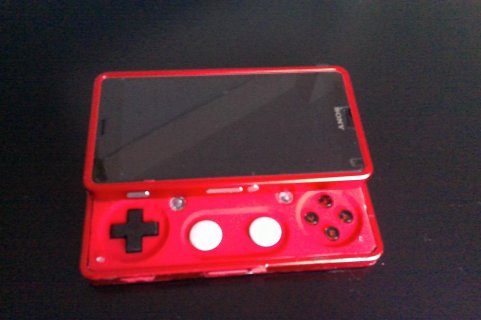Hello, I made this slide out game pad for my phone using the Teensy 3.1 board. I used the "joystick complete" program below and it works quite well, I just have a few coding questions:
1. How do you increase the sensitivity of the analog inputs? The sticks are being read, but they only have a small range, and I would like to increase that. What code can I use to achieve that?
2. What code would I use to invert the analog sticks? ( so up would be down etc.)
3. How would I re-map which button presses are triggered by each input? for example how would I make the button attached to digital input 4 trigger button 8.
sorry if these are simple/dumb questions. I am a complete code newbie. Thanks!
here is the code I'm using, it is one that came with Teensy:
1. How do you increase the sensitivity of the analog inputs? The sticks are being read, but they only have a small range, and I would like to increase that. What code can I use to achieve that?
2. What code would I use to invert the analog sticks? ( so up would be down etc.)
3. How would I re-map which button presses are triggered by each input? for example how would I make the button attached to digital input 4 trigger button 8.
sorry if these are simple/dumb questions. I am a complete code newbie. Thanks!
here is the code I'm using, it is one that came with Teensy:
Code:
/* Complete USB Joystick Example
Teensy becomes a USB joystick with 16 or 32 buttons and 6 axis input
You must select Joystick from the "Tools > USB Type" menu
Pushbuttons should be connected between the digital pins and ground.
Potentiometers should be connected to analog inputs 0 to 5.
This example code is in the public domain.
*/
// Configure the number of buttons. Be careful not
// to use a pin for both a digital button and analog
// axis. The pullup resistor will interfere with
// the analog voltage.
const int numButtons = 13; // 16 for Teensy, 32 for Teensy++
void setup() {
// you can print to the serial monitor while the joystick is active!
Serial.begin(9600);
// configure the joystick to manual send mode. This gives precise
// control over when the computer receives updates, but it does
// require you to manually call Joystick.send_now().
Joystick.useManualSend(true);
for (int i=0; i<numButtons; i++) {
pinMode(i, INPUT_PULLUP);
}
Serial.println("Begin Complete Joystick Test");
}
byte allButtons[numButtons];
byte prevButtons[numButtons];
int angle=0;
void loop() {
// read 6 analog inputs and use them for the joystick axis
Joystick.X(analogRead(0));
Joystick.Y(analogRead(2));
Joystick.Z(analogRead(1));
Joystick.Zrotate(analogRead(3));
// read digital pins and use them for the buttons
for (int i=0; i<numButtons; i++) {
if (digitalRead(i)) {
// when a pin reads high, the button is not pressed
// the pullup resistor creates the "on" signal
allButtons[i] = 0;
} else {
// when a pin reads low, the button is connecting to ground.
allButtons[i] = 1;
}
Joystick.button(i + 1, allButtons[i]);
}
// Because setup configured the Joystick manual send,
// the computer does not see any of the changes yet.
// This send_now() transmits everything all at once.
Joystick.send_now();
// check to see if any button changed since last time
boolean anyChange = false;
for (int i=0; i<numButtons; i++) {
if (allButtons[i] != prevButtons[i]) anyChange = true;
prevButtons[i] = allButtons[i];
}
// if any button changed, print them to the serial monitor
if (anyChange) {
Serial.print("Buttons: ");
for (int i=0; i<numButtons; i++) {
Serial.print(allButtons[i], DEC);
}
Serial.println();
}
// a brief delay, so this runs "only" 200 times per second
delay(5);
}


